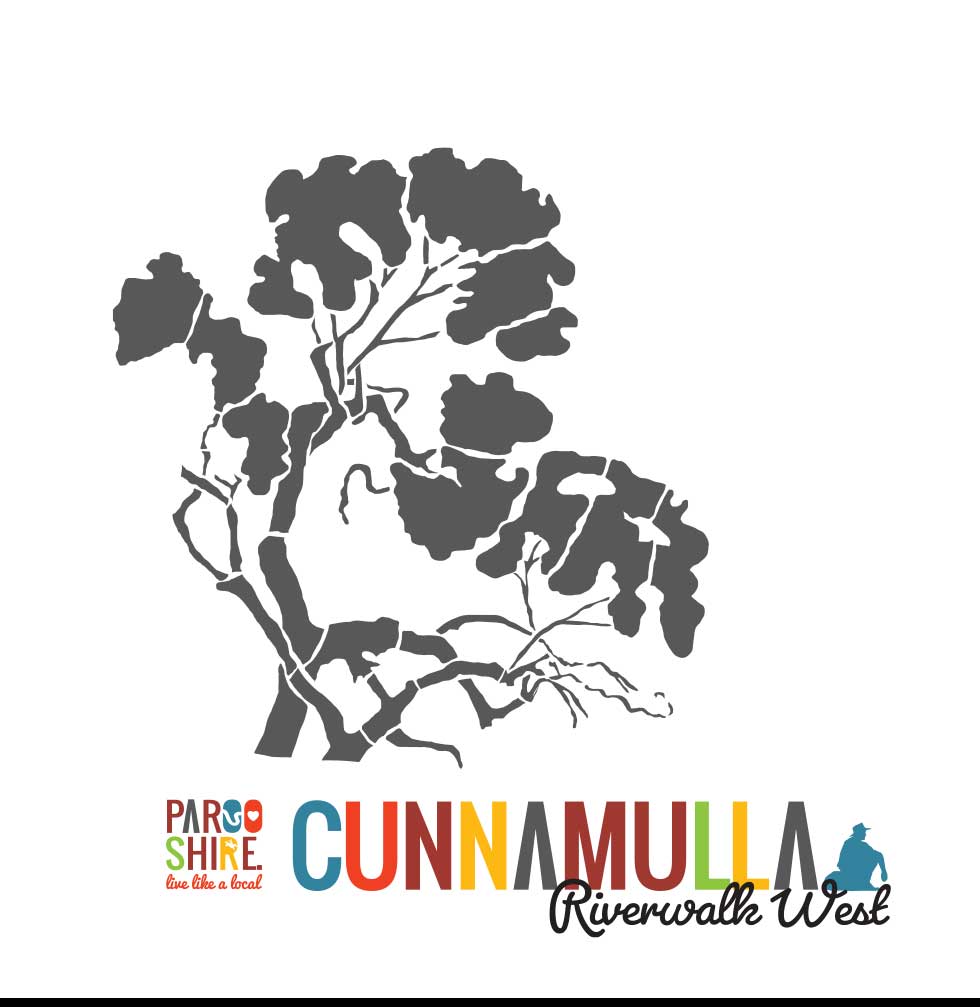
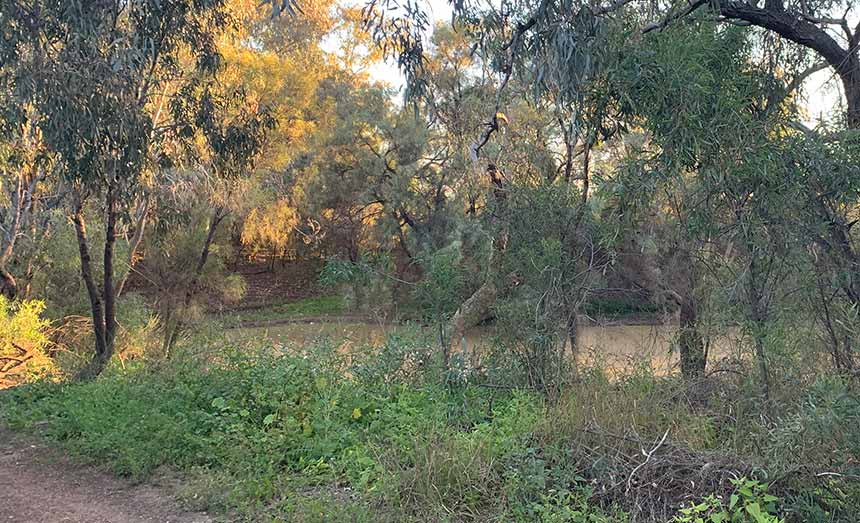
an ephemeral waterway
If you are visiting Coolibah Corner in the months following good rain you will see standing water backed up in the billabong that forms along the small creekline that here connects into the Warrego River. We can get some idea of the ebb and flow of water into this place from historical satellite imagery presented via Google Earth.
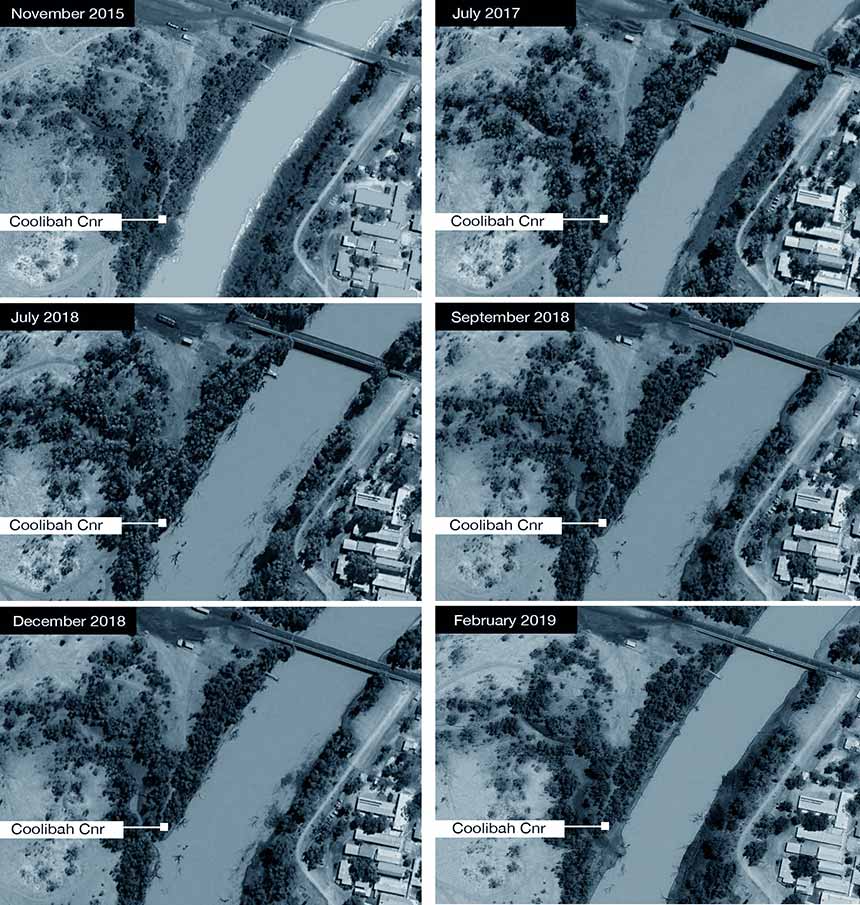
the Allan Tannock Weir
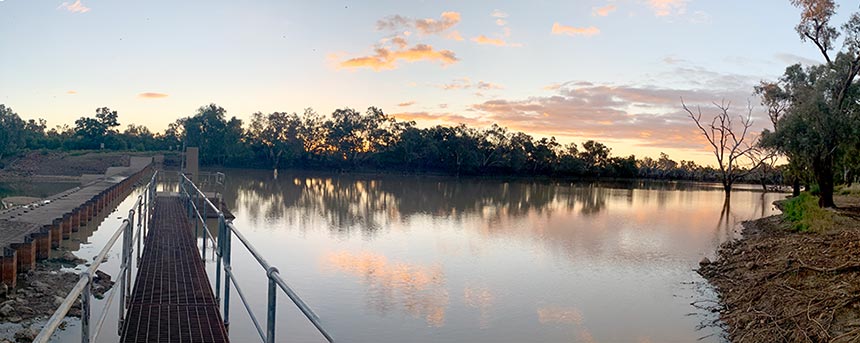
The ebb and flow of water levels here in the Warrego Channel at Cunnamulla is today heavily influenced by the operations of the Allan Tannock weir located 5km downstream from the town. It was completed in 1991 as a source of water for the surrounding landholders and to provide water for irrigation in and around Cunnamulla. Its capacity is 4770 megalitres. Immediately below the weir is a natural river crossing still known to most as Keanes Crossing where a road has been constructed to cross the Warrego River.
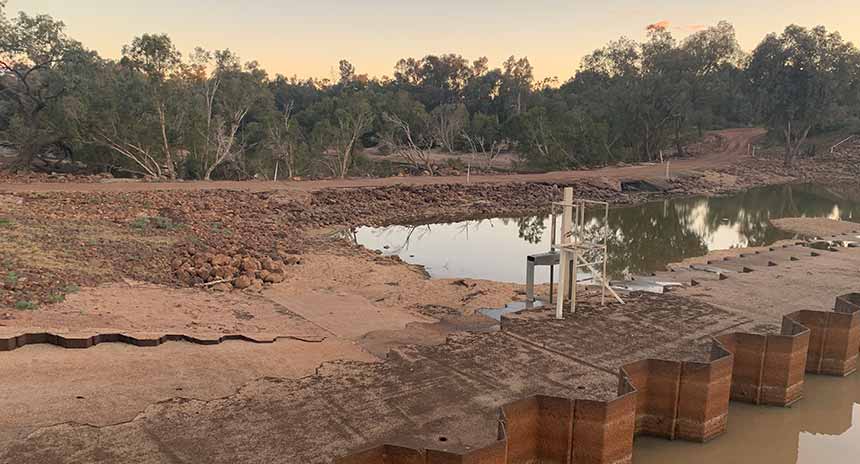
The construction of the weir means that standing water is now in place for nearly 10km of the Warrego River as it flows past Cunnamulla.

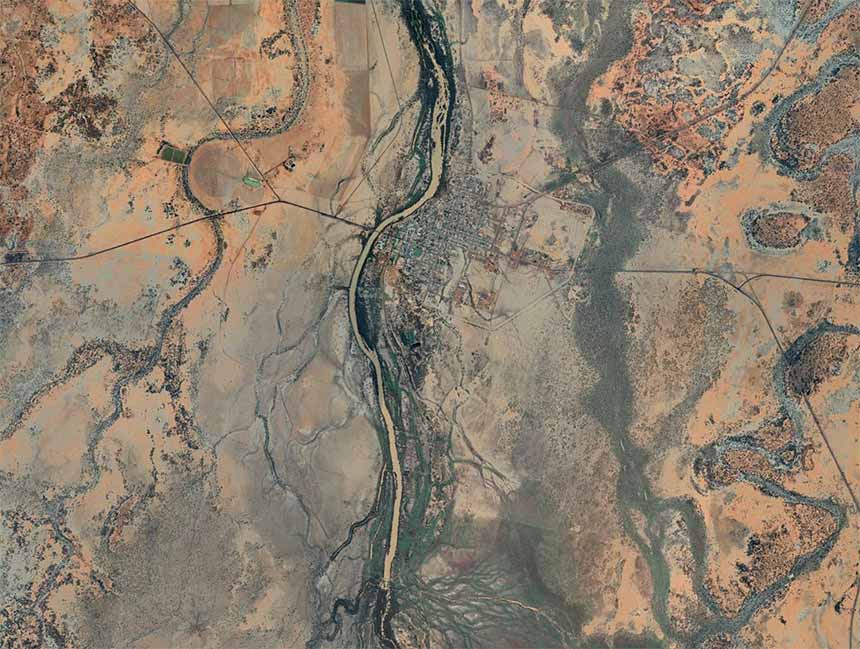
historical flows
For some sections of the river channel the construction of the weir has meant a major change to the levels of standing water it has traditionally contained. A good reference here comes from the first bridge here across the Warrego built in 1900. It was constructed immediately alongside the railway station located on the northern fringe of the town in keeping with its prime function as a freight depot. The bridge allowed produce to be readily brought into the station loading bays from properties located west of the Warrego River.

The riverbed here was shallow and covered with sand and gravels. Occasionally these in turn were covered with water!

Deep standing pools of water were however in place just further down channel alongside the township proper and these can be seen in the photo of the bridge being built over the river in its present day location in 1939.

In photos like this, the standing pools of water that gave Cunnamulla its name can be better appreciated. On occasion when the river was up after the rains, this standing water could even host a swimming carnival such that shown here in 1908.
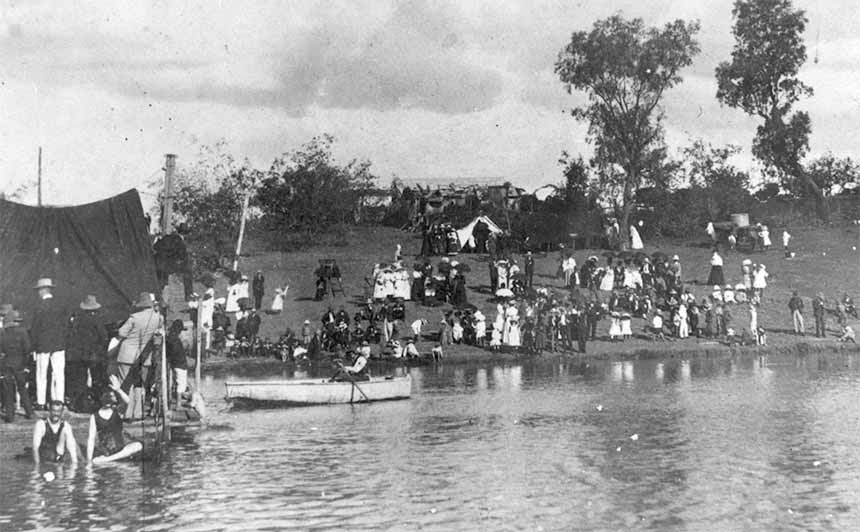
And provide a challenge to be ferried across from one bank to the other. (Look closely and you can see the landing that the sailing craft has left from on the far bank).
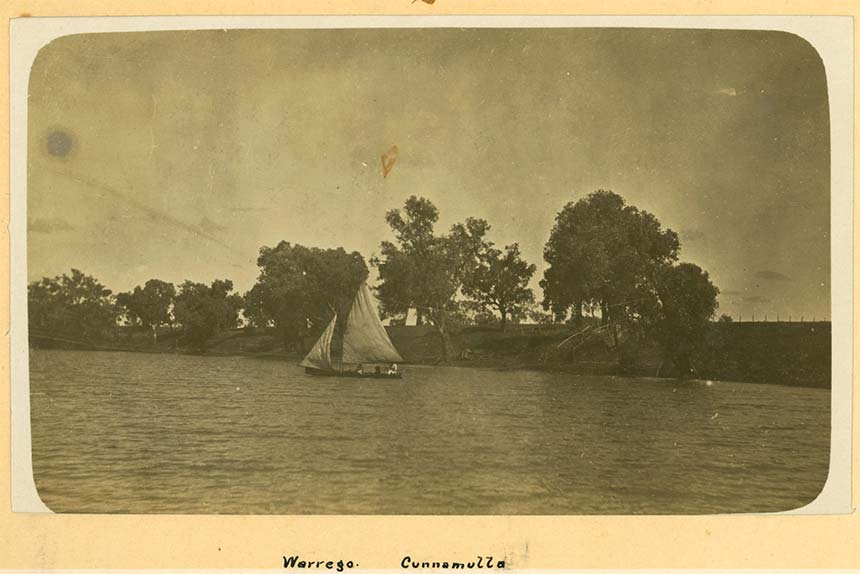
At all times however the standing pools were simply the peaceful backdrop to Cunnamulla community life.
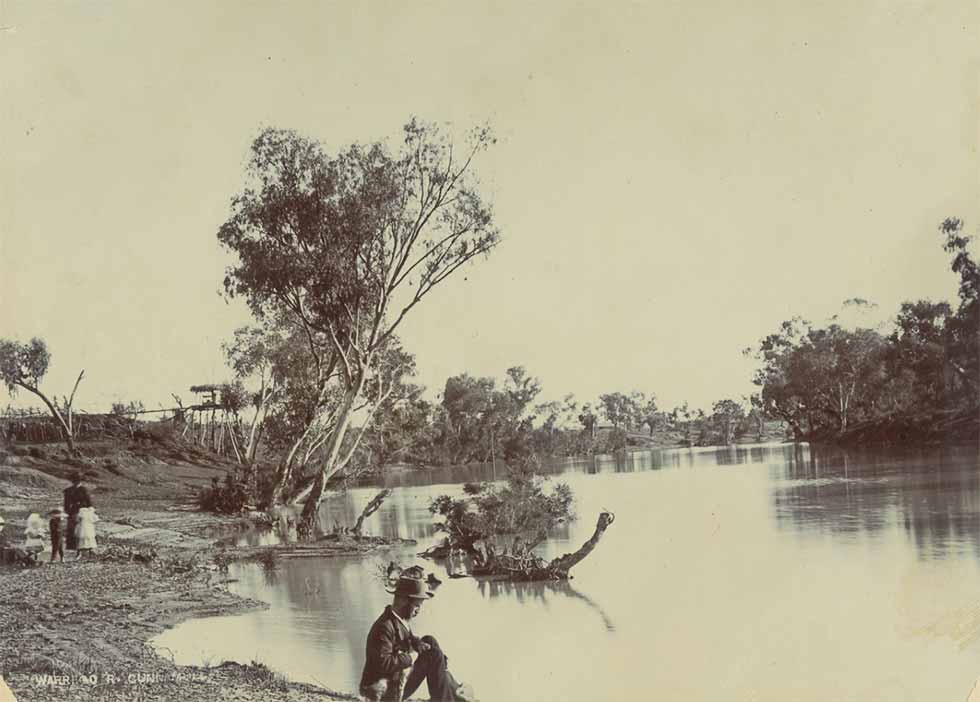

2. Coolibah
4. Blacksoil
